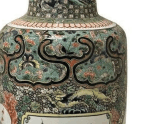Under the Black and Baltic Deep

The British poet Alfred Lord Tennyson provided the title for an exhibition at Northern Clay Center in Minneapolis that presented contemporary ceramics from Estonia, Latvia, and Lithuania. The phrase comes from the melancholy poem Maud, written around the time of the author’s more famous The Charge of the Light Brigade. It was not chosen as a description of the current state of the Baltic countries or Baltic ceramics, but it does point to the dark passages in the history of the Baltics and the depth, that is, complexity and profundity, of the issues surrounding their existence.1
The three Baltic republics are often grouped together, whether in relation to the nightmarish events of World War II and the Cold War, or to their current situation as former members of the Soviet bloc. On August 23, 1939, a secret agreement between Hitler’s Germany and Stalin’s Soviet Union divided Eastern Europe and ultimately led to Soviet control of the Baltic countries. But in 1989, on the fiftieth anniversary of that notorious pact, a human chain extending 420 miles linked Latvia, Lithuania, and Estonia, as approximately two million people joined hands. This peaceful demonstration, known as The Baltic Way, celebrated the resistance to Soviet rule less than three months before the fall of the Berlin Wall. It presented a visible sign of what, in 1991, was to become the reborn independence of the three states and a new era in the lives of their citizens.
In political, social, economic, and cultural history, as in the specialized case of ceramics, it remains important to acknowledge differences – Lithuania is mainly Catholic, for example, while Latvia is
You’re reading a preview, subscribe to read more.
Start your free 30 days



